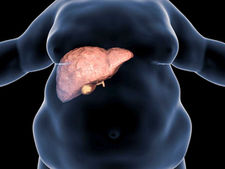
Epidural Anesthesia
What is Epidural Anesthesia and How is it Applied?
Epidural anesthesia; It is one of the regional anesthesia methods used to prevent pain sensation in the desired area of the body.
It is applied by an anesthesiologist who is experienced in this field. The purpose of epidural anesthesia is to stop only the sensation of pain, unlike general anesthesia, which is the loss of all sensations. Senses such as temperature and touch are not affected. Epidural anesthesia, which can be safely applied for normal and cesarean births as well as various surgical procedures involving the lower half of the body, is similar to spinal anesthesia, but its application technique is quite different. You will be asked to arch your back in a sitting or side-lying position. After applying an antiseptic solution to the waist area, local anesthesia is given and anesthetized. Anesthetics applied outside the sac where the spinal cord contains the cerebrospinal fluid are sent to the body through a thin tube called a catheter, not by direct injection. The plastic catheter is left inside, allowing medications to be administered and doses to be repeated. It is fixed with the help of plaster to prevent it from slipping. The patient is conscious and can walk after the procedure. Although epidural anesthesia is a practice that can be performed at all levels; It may result in serious spinal cord injuries at the levels where the spinal cord ends (levels above the 2nd Lumbar vertebra). Therefore, it should be performed by highly experienced anesthesiologists.
What are the negative aspects of epidural anesthesia?
Although it is very rarely seen; It may cause blood pressure to drop uncontrollably. Therefore, blood pressure is monitored frequently. Headache Palpitations Dizziness Bleeding, bruising or swelling in the area where anesthesia was applied Tinnitus Back pain Nausea and difficulty urinating The likelihood of these effects occurring is very low. Epidural anesthesia can be applied easily and safely, mostly without any side effects. In Which Situations
Is Epidural Anesthesia Not Applied?
If the patient does not want the application; If there is excessive bleeding or shock, patients using anticoagulant medications, patients with bleeding disorders, patients with infection in the intervention area, patients who have undergone surgery for a herniated disc or any other reason, epidural anesthesia may not be applied.
SPINOEPIDURAL (COMBINED) ANESTHESIA What is Spinoepidural (Combined) Anesthesia and How is it Applied?
The combined method of spinal and epidural anesthesia is called spinoepidural combined anesthesia. In patients who require a rapid onset, a comfortable surgical environment is created with spinal anesthesia, while medication is administered for postoperative pain control through the placed epidural catheter. This method is often preferred in caesarean sections. Spinal anesthesia begins to take effect more quickly than epidural anesthesia. In cases where rapid onset and continuation of postoperative pain treatment is desired; It is applied together with spinal and epidural anesthesia.
In its application, after the epidural space is found, the spinal fluid is reached by passing the thin needle through the epidural needle and a small amount of medication is administered into the spinal fluid. The fine spinal needle is removed and the epidural catheter is placed in the epidural space. The epidural needle is then removed and the catheter is fixed to the back as usual. The epidural pump injects medications slowly. The effect of spinal anesthesia lasts approximately 90 minutes. As the effect of spinal anesthesia decreases, epidural anesthesia comes into play.
FOR INFORMATION AND APPOINTMENT, YOU CAN LEAVE YOUR NUMBER OR ASK OUR EXPERTS
YOU CAN LEAVE YOUR NUMBER FOR INFORMATION AND APPOINTMENT AND ASK QUESTIONS TO OUR EXPERTS



-04.png)
-06.png)
-05.png)
-08.png)
-07.png)























